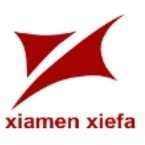
Sugarcane is a widely cultivated crop in many parts of the world, and its juice is used to produce various products such as sugar, molasses, and ethanol. However, the production of sugarcane also generates a significant amount of bagasse, which is a fibrous residue left over after the extraction of juice from the sugarcane stalks. In recent years, there has been a growing interest in using sugarcane bagasse as a packaging material, which has several benefits over traditional packaging materials like plastic or paper. In this essay, we will explore what sugarcane bagasse is, how it is produced, and its benefits as a packaging material.
Sugarcane bagasse is a byproduct of the sugarcane industry, which is generated when the juice is extracted from the sugarcane stalks. The stalks are crushed to extract the juice, leaving behind a fibrous residue that is known as bagasse. Bagasse is made up of a mixture of cellulose, hemicellulose, and lignin, which are the primary structural components of plants. The bagasse is then typically burned to generate steam, which is used to power the sugar mills or sold as fuel to other industries. However, in recent years, there has been a growing interest in using sugarcane bagasse as a raw material for producing packaging materials.
The process of producing sugarcane bagasse packaging materials involves several steps. First, the bagasse is collected from the sugar mills and transported to a processing facility, where it is cleaned and screened to remove any impurities. The bagasse is then pulped, which involves breaking down the fibrous material into a pulp using chemicals and water. The pulp is then formed into sheets or molded into various shapes, depending on the intended use. Finally, the packaging materials are dried and finished before being shipped to customers.
One of the main benefits of using sugarcane bagasse as a packaging material is its environmental sustainability. Unlike traditional packaging materials like plastic or paper, sugarcane bagasse is a renewable resource that is generated as a byproduct of the sugarcane industry. By using bagasse as a raw material for packaging, we are reducing the amount of waste generated by the sugarcane industry and creating a more sustainable use for this resource. Additionally, sugarcane bagasse packaging materials are biodegradable and compostable, meaning they can be broken down by natural processes and do not contribute to the accumulation of non-biodegradable waste in landfills or oceans.
Another benefit of sugarcane bagasse packaging materials is their durability and strength. Bagasse is a fibrous material that has a natural resistance to moisture and is highly durable, making it an ideal material for packaging. Sugarcane bagasse packaging materials can withstand a significant amount of weight and pressure, making them suitable for transporting heavy or delicate items. Additionally, sugarcane bagasse packaging materials are resistant to grease and oil, making them an excellent choice for packaging food products.
Sugarcane bagasse packaging materials also offer several advantages over traditional paper packaging materials. Bagasse is a stronger and more durable material than paper, making it less likely to tear or break during transportation. Additionally, sugarcane bagasse packaging materials have a lower carbon footprint than traditional paper packaging materials because they require less energy and water to produce.
In conclusion, sugarcane bagasse is a fibrous residue left over after the extraction of juice from sugarcane stalks. It is a renewable resource that is generated as a byproduct of the sugarcane industry and can be used to produce packaging materials that are biodegradable, compostable, durable, and resistant to moisture, grease, and oil.
